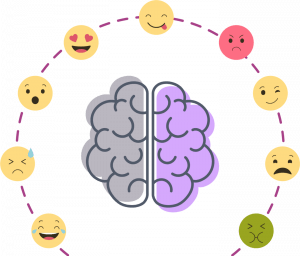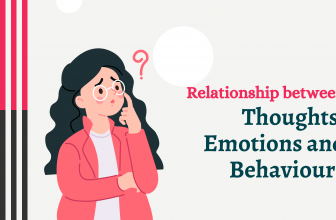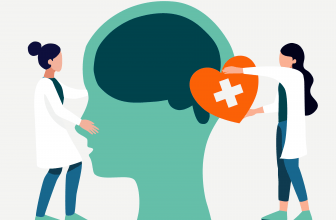Understanding emotions is the first step before you can learn the manage them.
If you are feeling overwhelmed by your emotions, you may not be able to understand what you are feeling and why. In this post, we will explain what you can do to change your feelings and emotions and improve your life.
Emotions are one of the most powerful forces in our lives. We all have them. We all experience them. There are many different reasons why we experience emotions. Some make us more productive and some influence our productivity negatively. Emotions are like a compass that we use to guide us through life.
But we don’t always know how to deal with them. That’s why it’s important to understand your emotions and why you are feeling them.
Why are emotions important?
Emotions are important because they play an important role in our lives.
They affect our thoughts, perceptions, and behaviours. They influence the way we communicate with ourselves and others, make decisions, and achieve our goals.
Emotions are what make us human and allow us to experience life in all its richness. Emotions give us the ability to feel joy, love, happiness, sadness, anger, and frustration.
Each of these emotions serves a purpose and can be helpful in different situations. For example, happiness can help us enjoy life more while sadness can prompt us to reflect on our lives and make changes.
Understanding emotions can help people live happier and healthier lives.
The Problem
The problem is that people often do not understand their emotions and what they mean. This can lead to them not being able to deal with them effectively, which can then lead to problems in their personal and professional lives.
The Solution
Before we can resolve a problem, it is important to understand the problem.
- Start by understanding what does the word emotion mean.
- Learn about the different types of emotions
- Explore the reasons behind each type of emotion or the purpose that the emotion serves
- Develop skills and learn techniques to manage emotions and express them effectively whenever required
- Visit a mental health practitioner and make them your partner in your journey towards sustainable mental wellbeing

What are Emotions?
Emotion has been defined in many ways by many different people. However, one of the most popular definitions is that emotions are “feelings that we experience in response to events or stimuli”.
In other words, emotions are feelings that are directed at someone or something. Something-someone we love, something we hate, or even something we’re afraid of.
There are many different types of emotions, and they can vary in intensity from mild to intense.
What are the different types of emotions?
There are many different types of emotions, and they can be broadly divided into positive and negative emotions. Positive emotions include happiness, joy, love, excitement, and contentment, while negative emotions include anger, sadness, fear, and guilt.
Before we go ahead, it is important to recognize that the words positive and negative should not be confused with good and bad. All emotions are important. Each type of emotion serves a different purpose. For example, happiness is associated with positive experiences and feelings of pleasure, joy encourages us to explore and take risks, love makes us feel connected to others, and excitement motivates us to achieve our goals. Negative emotions, such as sadness and anger, can alert us to problems that need to be addressed and may motivate us to change our behaviour.
There is 6 basic, core emotions. They include sadness, happiness, fear, anger, surprise, and disgust. These emotions mix and in different intensities other secondary emotions appear like Pride, amusement, relief, affection, zest, and so on.
What are the different causes of emotions?
Broadly speaking, emotions are a result of how we relate to something or someone.
- How we relate to this something or someone can either lead to a conditioned emotional response that is more instinctive or it may first trigger a thought that may translate into an emotion. The thoughts themselves may be a result of our beliefs, values, expectations which in turn may be a result of our past experiences.
- The expression “something or someone” really refers to:
- I, myself
- Others
- Situations
- Future
In other words, emotions are a result of how I relate to
- What I have done or am currently doing
- What others have done or are currently doing
- The situation that I have been through or that I currently am in
- My expectation from the future.
This understanding can go a long way in finding effective ways to manage our emotions.
What is the simplest way to identify the emotion that I feel and the purpose that the emotion serves?
The simplest way to identify what you feel is to look at what do you think is the cause/source of the emotion.
To understand this better, try and answer the following questions:
If I thought I made a mistake, what emotion do you think I would be feeling?
Guilt, Regret, Shame…
Since these emotions are a result of a mistake that I made, what purpose do these emotions serve?
Learn from the mistake so that I do not make the same mistake again
If I thought someone has not fulfilled my expectations and hence is responsible for my problems, what emotion do you think I would be feeling?
Anger, Rage, irritation, frustration…
Since these emotions are mostly a result of unmet expectations, what are they trying to tell us?
That we are expecting something from someone who is either incapable or unwilling to do what we want them to do. In other words, we are not willing/able to accept the other person for what he or she is. If lack of acceptance is the issue the objective or the solution here would be acceptance.
However, having identified that acceptance is the solution, it should not be misconstrued with that of resignation. There is a difference between acceptance and resignation. Acceptance means accepting the other and self both. Acceptance will give us more choices and enable us to look for alternate behaviours. You can check out the difference between acceptance and resignation by checking out this post.
If I thought that neither I nor others were really at fault but it was just that the situation was bad, what emotion do you think I would be feeling?
Helpless, Hopeless, Sad…
Since these emotions are mostly a result of situations that we do not have the skills to cope with, what do you think these emotions are trying to tell us?
Develop skills and coping strategies to manage/handle these situations more effectively
If I thought that my future may not be what I want, what emotion do you think I would be feeling?
Afraid, Anxious, Worried….
Since these emotions are mostly a result of what may go wrong, what are they trying to tell us?
If I am worried about what may go wrong, the emotion is guiding me towards creating a better plan for my future and developing the faith that things will happen as per my plan and confidence that if things do not happen as per the plan then I will be able to find a way around the same.
Now that I understand the emotions, how do I manage them more effectively?
You can develop skills and learn techniques to fulfil the purpose that each of these emotions is serving. As you learn ways and develop skills to understand and fulfil the purpose behind the emotions that you feel, you will notice that are able to manage emotions more effectively. Some of the techniques that can help you in this process include:
- Introspection
- Mindfulness
- Goal Setting and Planning
- Gratitude
- Journaling
These are some of the techniques to get you started, follow this space for details about these techniques and a lot more in the coming days.
What to manage emotions when I don’t know the cause?
Though techniques mentioned earlier may over a period of time help in pinpointing the specific causes of the emotions, our recommendation is to connect with a mental health practitioner. Many times these emotions can be a result of past experiences or emotions that have been suppressed. You can read more about the same in the upcoming post on the Breakdown Cycle.
How will a mental health practitioner help me manage my emotions?
A mental health practitioner can help you understand the emotions you are feeling, can help you identify the underlying causes. A trained practitioner will also be able to help you identify and transform the thoughts, beliefs, values that may be leading to these emotions. If required, they will be also able to help you work with past suppressed emotions, repressed memories and traumas.
The practitioner will also help you plan for your life more effectively, develop the required skills to manage the emotions and execute that plans so that you can work towards your desired outcome.
If you want to know more about how therapy can help you do more and live a happier and healthier life, connect with a mental health practitioner now.







[…] Emotions are feelings that are associated with particular thoughts or experiences. They can be happy, sad, angry, anxious, etc. Emotions can vary in intensity from mild to intense. When we experience strong emotions, it can be difficult to think straight. This is because emotions can affect the way we think and make decisions. […]